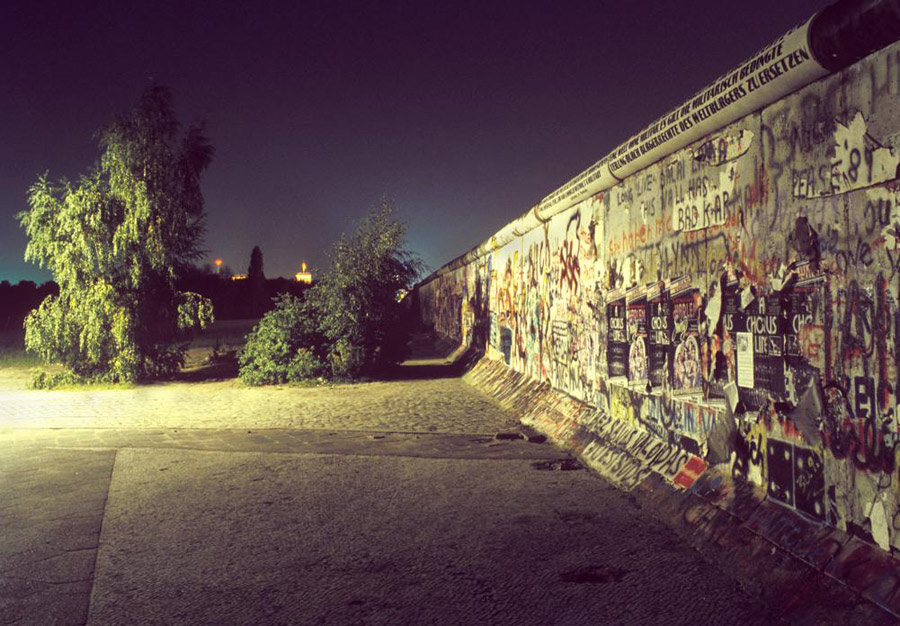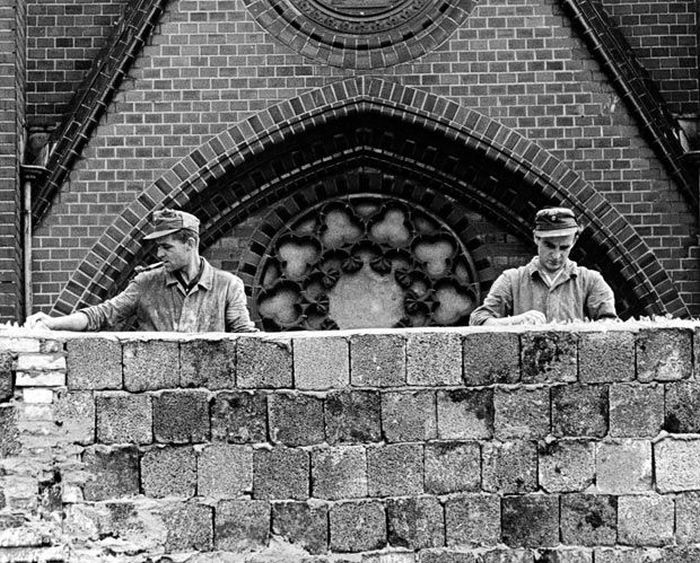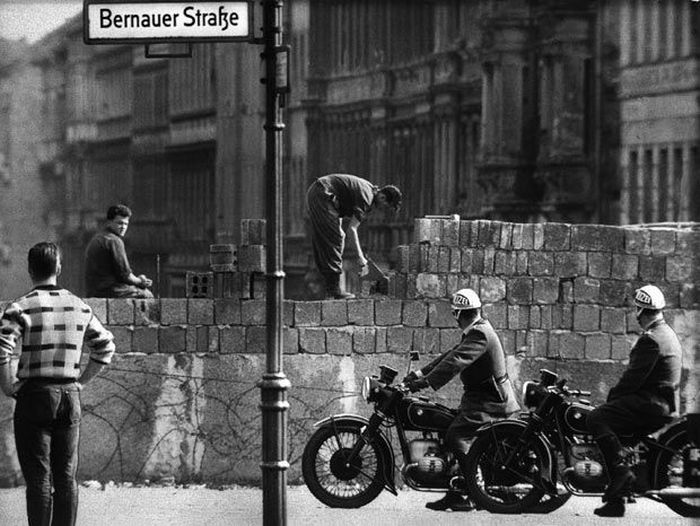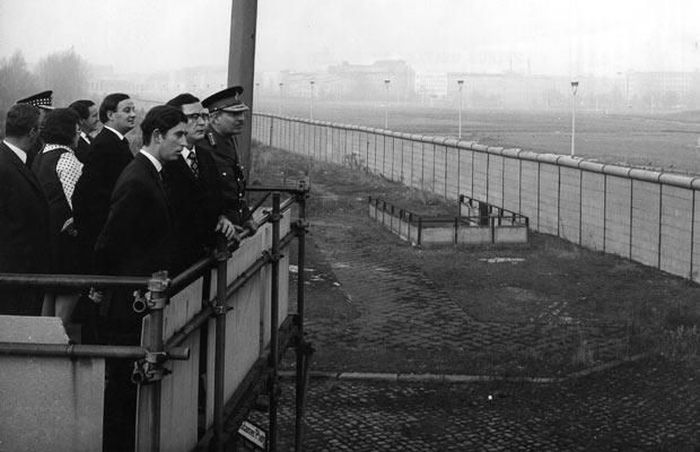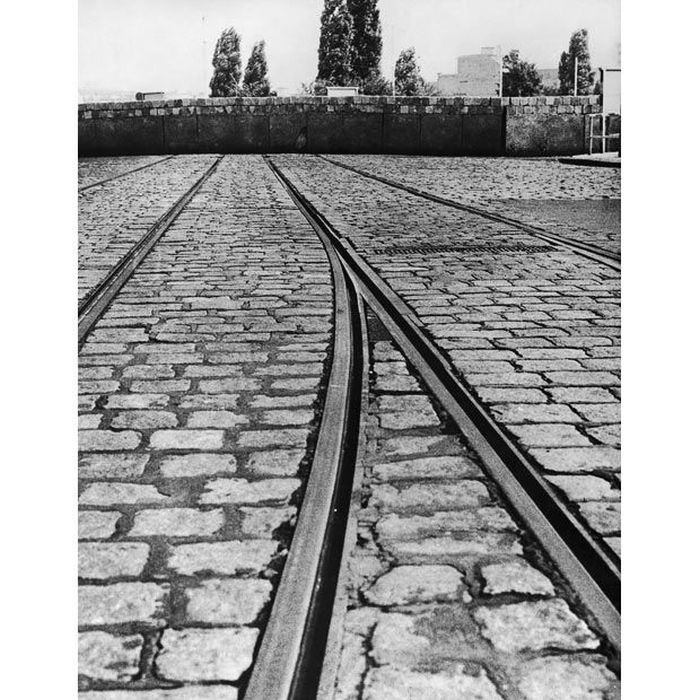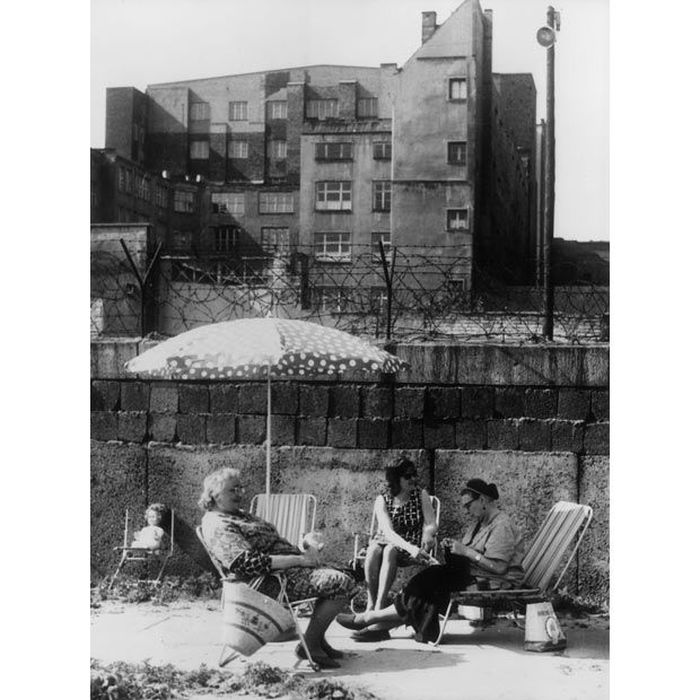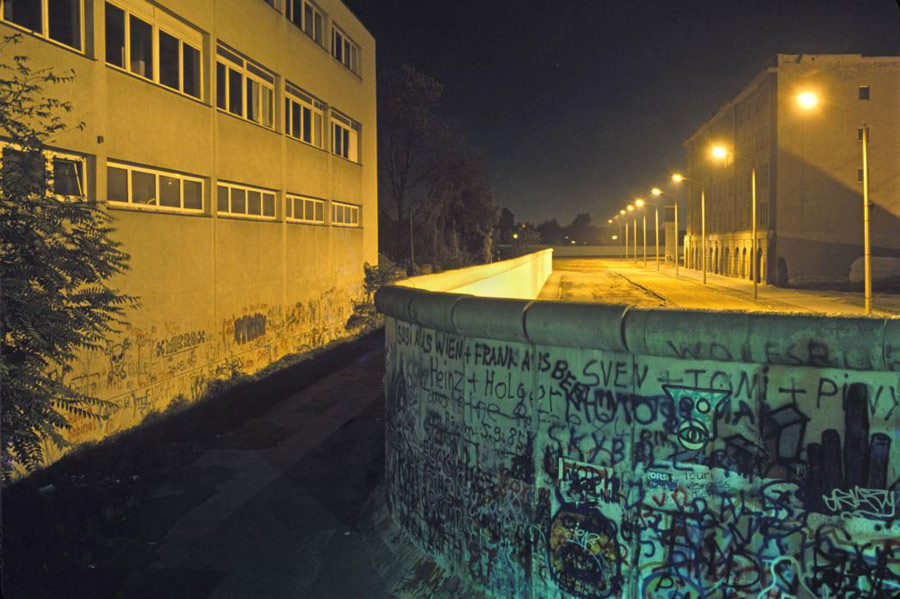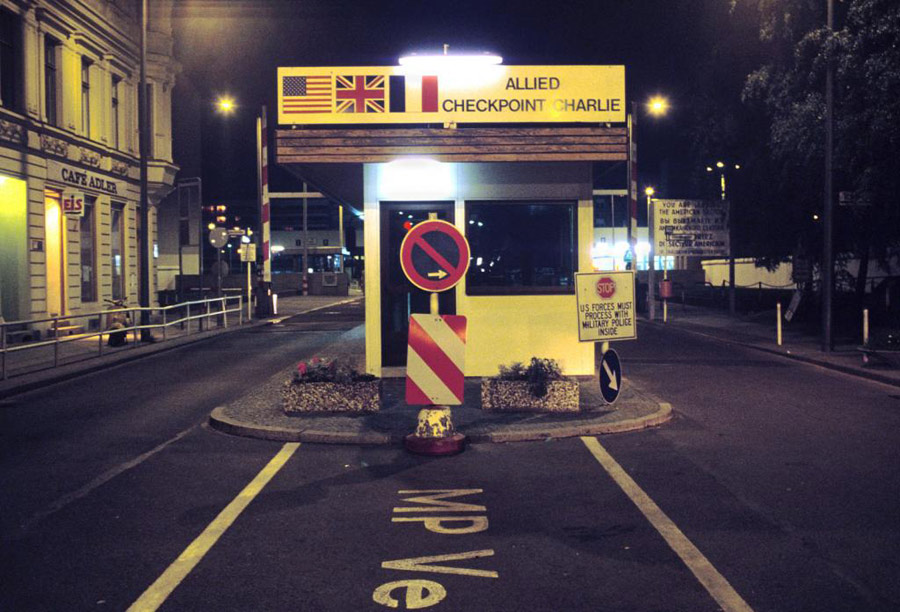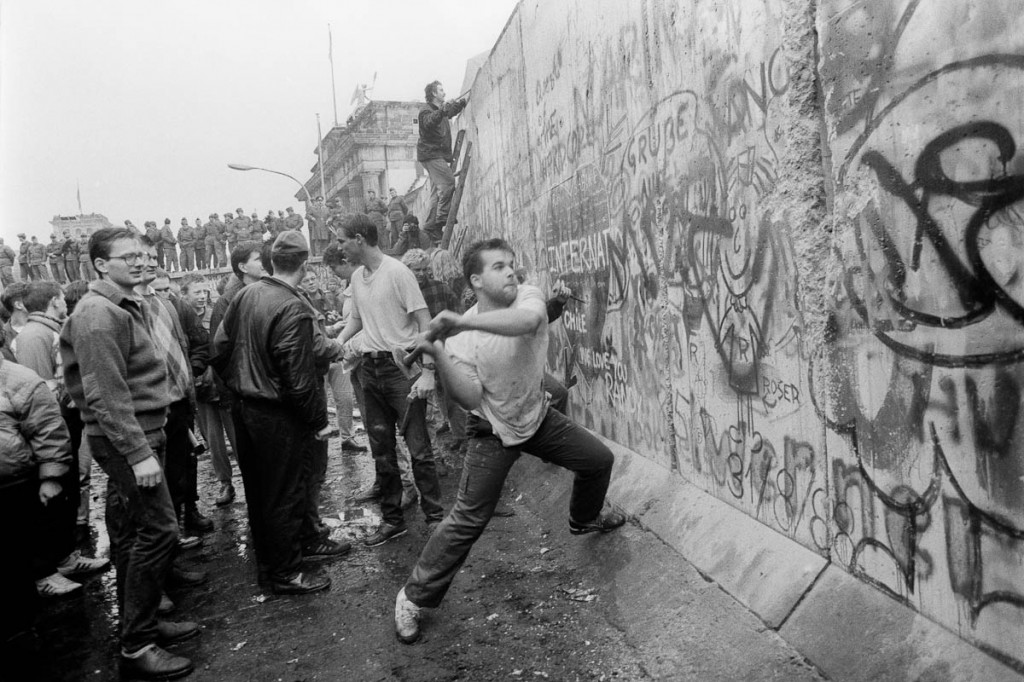 On the morning of August 13, 1961, the residents of East Berlin found themselves cut off from family, friends, and jobs in the West by a tangle of barbed wire that ruthlessly split a city of four million in two.
On the morning of August 13, 1961, the residents of East Berlin found themselves cut off from family, friends, and jobs in the West by a tangle of barbed wire that ruthlessly split a city of four million in two. 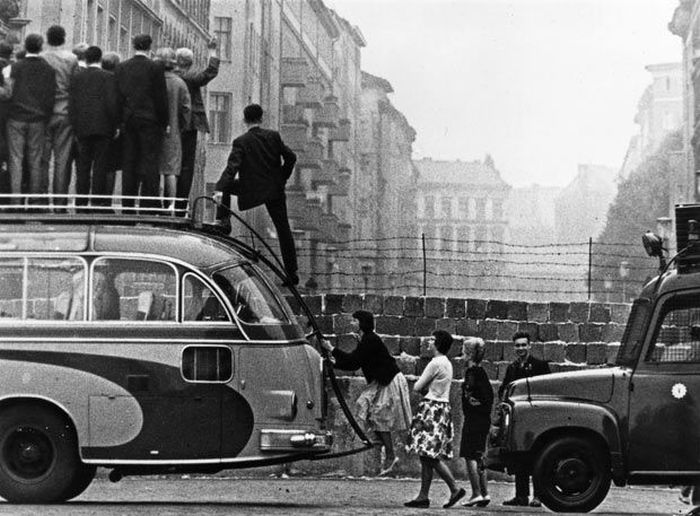 Within days the barbed-wire entanglement would undergo an extraordinary metamorphosis: it became an imposing 103-mile-long wall guarded by three hundred watchtowers. A physical manifestation of the struggle between Soviet Communism and American capitalism that stood for nearly thirty years, the Berlin Wall was the high-risk fault line between East and West on which rested the fate of all humanity. The Berlin Wall was a barrier constructed by the German Democratic Republic (GDR, East Germany) starting on 13 August 1961, that completely cut off (by land) West Berlin from surrounding East Germany and from East Berlin.
Within days the barbed-wire entanglement would undergo an extraordinary metamorphosis: it became an imposing 103-mile-long wall guarded by three hundred watchtowers. A physical manifestation of the struggle between Soviet Communism and American capitalism that stood for nearly thirty years, the Berlin Wall was the high-risk fault line between East and West on which rested the fate of all humanity. The Berlin Wall was a barrier constructed by the German Democratic Republic (GDR, East Germany) starting on 13 August 1961, that completely cut off (by land) West Berlin from surrounding East Germany and from East Berlin.
The Eastern Bloc claimed that the wall was erected to protect its population from fascist elements conspiring to prevent the “will of the people” in building a socialist state in East Germany. In practice, the Wall served to prevent the massive emigration and defection that marked East Germany and the communist Eastern Bloc during the post-World War II period.
The Berlin Wall is perhaps the most well-known wall ever. It took a lot of effort to put it together and these are the people that gave it their all to make it happen.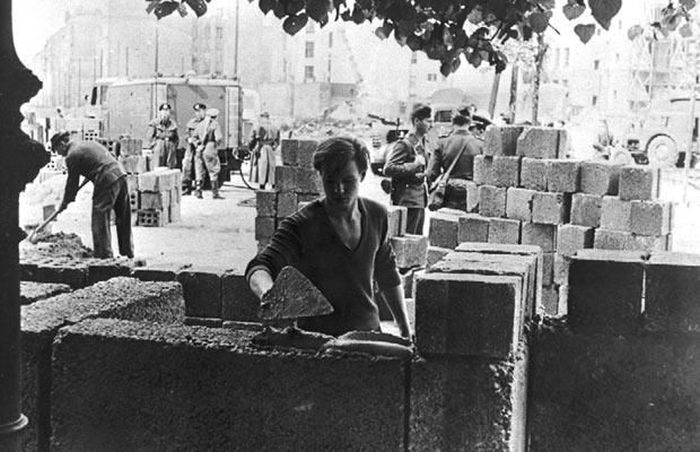
The life in the West was much better than in the East after 1948. West Germany including West Berlin had got financial help through the Marshallplan from the USA. In East Germany a communist system was established and many people had to suffer under repressions of the Communist party.
Berlin was an especially tender spot, because it was the only gap in the Iron Curtain. People in West Berlin could fly out of the city freely. Huge numbers of them did leave. By 1960, tens of thousands of people were leaving every month. In 1961, more than 200,000 East Germans had defected by summer. [source: Schmemann].
The barrier included guard towers placed along large concrete walls, which circumscribed a wide area (later known as the “death strip”) that contained anti-vehicle trenches, “fakir beds” and other defenses. Between 1961 and 1989, the wall prevented almost all such emigration. During this period, around 5,000 people attempted to escape over the wall, with an estimated death toll of over 100 in and around Berlin, although that claim is disputed.
In 1989, a series of radical political changes occurred in the Eastern Bloc, associated with the liberalization of the Eastern Bloc’s authoritarian systems and the erosion of political power in the pro-Soviet governments in nearby Poland and Hungary. After several weeks of civil unrest, the East German government announced on 9 November 1989 that all GDR citizens could visit West Germany and West Berlin. Crowds of East Germans crossed and climbed onto the wall, joined by West Germans on the other side in a celebratory atmosphere.
Over the next few weeks, euphoric public and souvenir hunters chipped away parts of the wall; the governments later used industrial equipment to remove most of what was left. The physical wall was primarily destroyed in 1990. The fall of the Berlin Wall paved the way for German reunification, which was formally concluded on 3 October 1990.
Source: Memolition via Wiki, credits: Greg Girard , Frederick Taylor)

